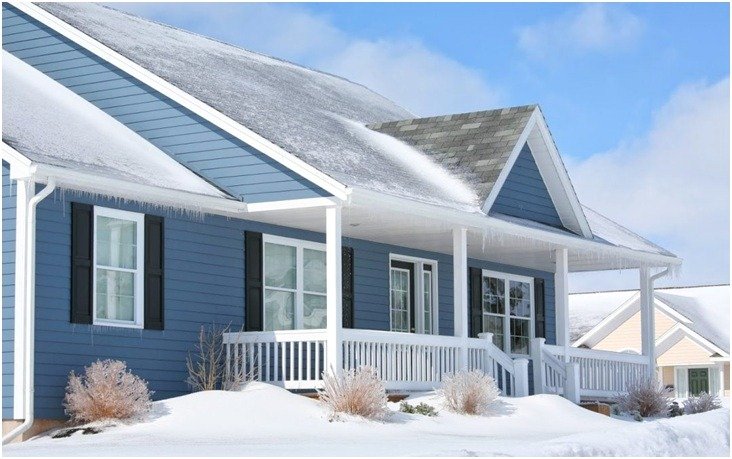The best thing about a snowy, wet, winter is having a cozy home to curl up in. However, if your roof is not fully weather-proof, you could be in for a not-so-cozy winter experience.
Proper insulation and sealants are the only way to guarantee a snug time indoors, and in this article, we will give you three tips on getting your roof ship-shape and ready for a stormy winter.

The tips we’ll outline here are: clearing your roof, securing installation, and applying a weatherproof membrane.
Read Also:
- Roof Tiles vs. Shingles: Which Roof Should You Choose for Your Home?
- Fix it Up: 5 Signs That Will Tell You It’s Time to Repair Your Roof
- Tips for Choosing the Best Roofers for Roof Repair and Inspection
- The Most Important Steps to Have Your Home Ready for Winter
- Roofing Types and How to Know Which One Is Right for You
- How to Keep Your Leaf Gutters Clean
Clearing Your Roof
It’s best to start preparing your home by ensuring a clean roof, and this requires removing all debris that might have fallen on it during the fall and summer months.
It may not seem like an important task, but these small pieces can hold moisture and potentially mold or rot, thereby breaking down your roof material.
If you have a step ladder or a secure method getting on top of your roof, a simple household broom or leaf blower is all you need to remove the “gunk”.
You’ll know when to contact a roofing company if there have been many summer and autumn storms and the buildup is significant — especially if your roof has an extreme pitch to it — so remove the debris safely and identify any potential leaks or ventilation issues.
Securing Installation
After the waste is removed, the next step towards having a secured roof this winter is checking all insulation and making sure there is proper ventilation. Having adequate airflow in your roof is imperative to keep your gas and energy bills low.
This is because the heat stays within the structure instead of being released gradually through gaps and crevasses.
Furthermore, the heat can produce condensation that further encourages mold and bacteria to form in your attic – not to mention ice dams. Roofs that are particularly slanted or gabled may need to be checked more thoroughly.
Not only does this make your property more efficient, but also keeps your home cooler during the summer months.

Applying a Weatherproof Membrane
Lastly, you should always ensure that a proper weatherproof membrane is applied to your roof before the cold months arrive.
This weatherproof membrane is a silicone-based, self-curing, a polymer that forms a flexible and seamless sheath on a variety of roof materials.
It prevents moisture build-up and seeping liquids from entering your roof after accumulating snow or rainfall.
Membranes can further improve the efficiency of your heating units as they completely prevent any excess heat from leaving a sealed vicinity. Such material is also beneficial to prevent leakage behind stone or tile fixtures, indoors, or outdoors.
Having a clean roof, keeping the heat inside your home, and preventing the winter cold from entering are the essential steps of storm-proofing your property in the winter.
If you are unable to perform these tasks or simply lack the time and resources to do so, contacting a local professional to prepare your roof will save you a great deal of money in the long run so you can cozy up with a mug of hot chocolate!









